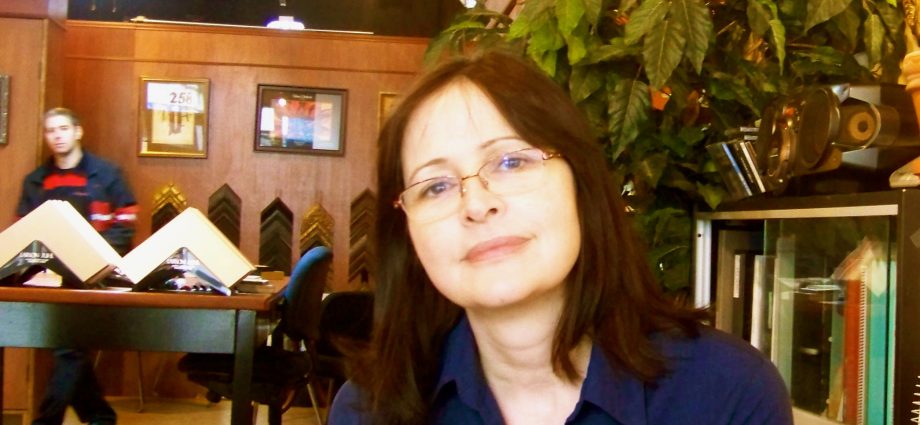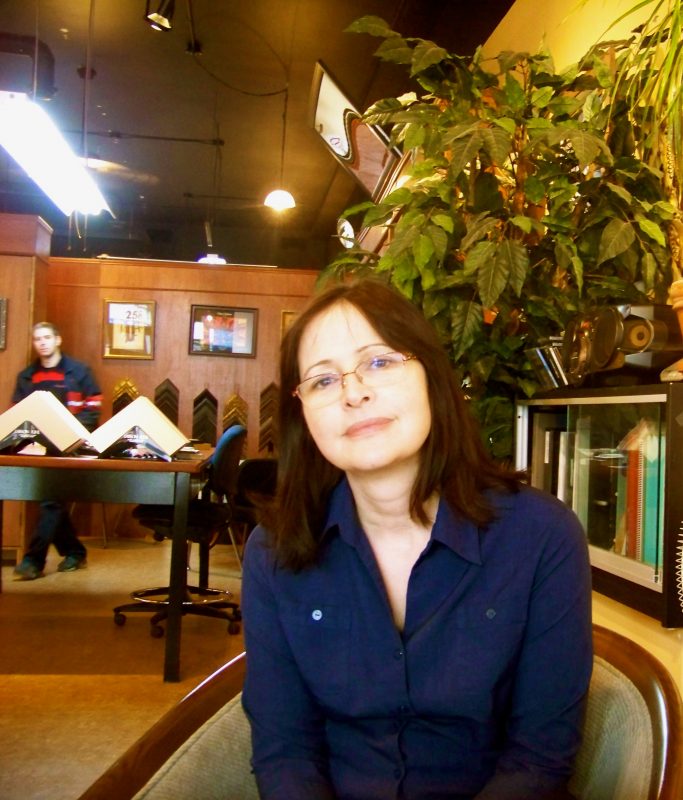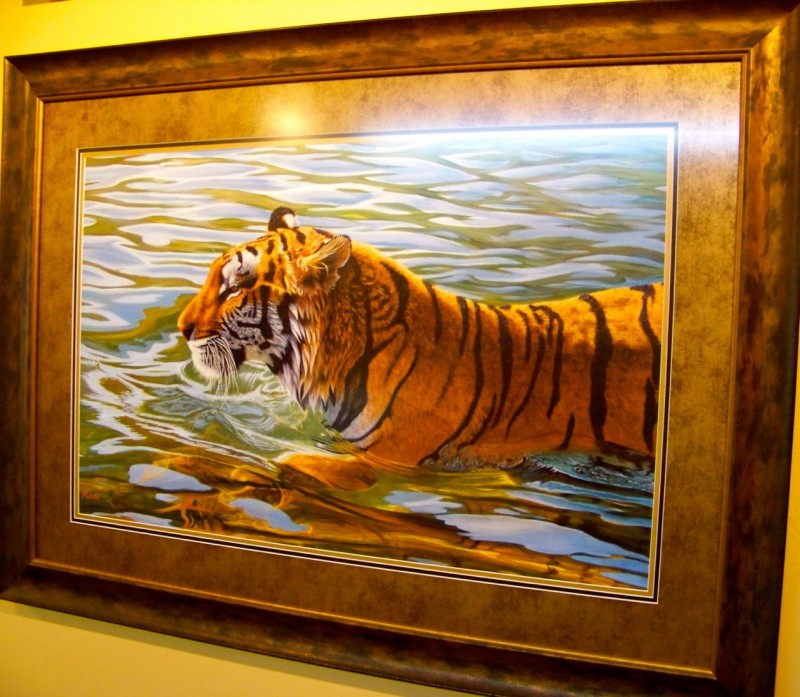You know the expression: Apple pie without cheese is like a kiss without a squeeze. While it may not wax as poetic as the alleged Van Gogh quote: “A picture without a frame is like a soul without a body,” when combined with Dawn Dempster’s insights, both may offer useful ways to frame the essence of framing. For as Dawn says:
“People often underestimate the value of the frame.”
Inside the artful interior of Dempster’s Frameworks on Pitt St., I’m reminded that people frame all kinds of things. From hockey sweaters and historical photos to needlepoint and news clippings. And Dawn says the most unusual thing she has ever framed is a full-length white satin wedding gown from the 1940s.
But she’s taking me beyond the everyday things we may frame for pleasure or display and helping me see how fine art framing, in particular, is a bit of a paradox.
Let’s start with Dawn’s description of the framers goal, which is to establish a flawless finish that flatters the piece but draws no undo attention to the frame except to create the illusion that it has always been there.
Confused? OK. Try this. The paradox is that the frame must be so harmonious, so natural and so complementary that it’s almost not there.
It’s a pretty complex goal. So I can’t help but ask about the client who’s simply looking for a frame to match his black leather furniture.
Dawn says she deals with that kind of orientation quite often, but that she always takes care to guide clients in a way that they learn to “see the art” without being distracted.
Or, as Dawn says:
“The piece dictates its own frame and what it can support. If you force it, it won’t work.”
So I ask her to tell me more about the precision part of framing.
“I brought my graphic design background to my career and long apprenticeship under my father-in-law, George Dempster. Point being that with fine art you’re more ‘free’ to be imperfect. That’s the nature of art. But with framing, measurements have to be perfect, mats have to be perfect, cutting has to be perfectly square. In addition, you have to make sure the thing you’re framing is square. Often it’s not, so you have to figure out how best to flatter the piece.”
This lesson applies well to clients who return home with pieces of art from the Dominican Republic, China, India or some other country. (I’ve been that client.)
“These canvasses often have to be stretched to eliminate flaws. Then again, sometimes you want to accentuate a flaw, a rag edge for instance. It can make the artwork more interesting, enhance its authenticity or uniqueness.”
Dawn knows I appreciate her guidance. Together we’ve shared at least a dozen framing experiences, and the successes make me enjoy the art so much more.
I ask her if there’s anything she wants to add and she restates the basics, counting them out on her fingertips: Colour, texture, the date or period of the piece, and style of frame.
And I’m adding my own two cents. If ever you find yourself in a store where the clerk waves at a wall of framing samples and says:
“Just choose whatever you like,” think twice. The clerk may not have the proficiency that an experienced professional like Dawn has.
You’d be wise to take advantage of Dawn’s artful soul.
Remember, if there’s art in what you do, I want to hear from you via artofeverything@cornwallfreenews.com






